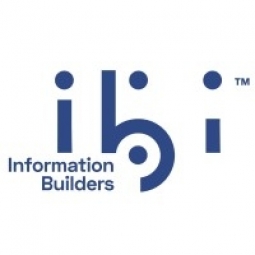Customer Company Size
Large Corporate
Region
- America
Country
- Canada
Product
- WebFOCUS
- iWay Service Manager
Tech Stack
- Business Intelligence
- Enterprise Integration Software
- GIS technology
Implementation Scale
- Enterprise-wide Deployment
Impact Metrics
- Productivity Improvements
- Customer Satisfaction
Technology Category
- Analytics & Modeling - Real Time Analytics
Applicable Industries
- Healthcare & Hospitals
- Cities & Municipalities
Applicable Functions
- Human Resources
- Business Operation
Use Cases
- Real-Time Location System (RTLS)
- Predictive Maintenance
Services
- Cloud Planning, Design & Implementation Services
- Data Science Services
About The Customer
The Ministry of Alberta Seniors and Community Supports is an Alberta provincial ministry in Canada. It is responsible for developing and delivering programs and services to approximately 385,000 seniors and 37,000 disabled persons. The ministry manages accommodation standards for long-term care facilities and the Education Property Tax Assistance for Seniors program. It also creates productivity reports to monitor how efficiently its agents are serving senior citizens. The ministry is planning to let users customize their own portal environments in the future.
The Challenge
The Ministry of Alberta Seniors and Community Supports was facing challenges in providing a proactive approach to reporting and developing efficient procedures for addressing client needs. Processors had limited access to client data, which slowed down the processing of client requests. Managers also had difficulty tracking workers’ performance. The ministry was also facing internal growth and demand for its services escalated. Users at various levels of the organization needed a simple, easy-to-use interface, the power to accurately drill down through the information, and the ability to export information in a wide range of reporting formats.
The Solution
The ministry partnered with Information Builders to build a standard BI environment that combines data from multiple information systems to quickly process requests and share information throughout the ministry. They developed a customized product roadmap – a solution that provided the ministry with flexible license terms so it could meet current needs yet have the option to scale at a later date. The ministry used data adapters from Information Builders’ iWay Software division to directly access production data, postponing the necessity of building an operational data store and data warehouse. They then installed Information Builders WebFOCUS as the foundation of a new enterprise-wide BI environment, in conjunction with enterprise content management support. Both software environments are now accessible through the ministry’s intranet portal.
Operational Impact
Quantitative Benefit

Case Study missing?
Start adding your own!
Register with your work email and create a new case study profile for your business.
Related Case Studies.

Case Study
Turning A Stadium Into A Smart Building
Honeywell created what it called the “intelligent system” for the National Stadium in Beijing, China, turning the venue for the opening and closing events at the 2008 Summer Olympics into a “smart building.” Designed by highly controversial artist Ai Weiwei, the “Bird’s Nest” remains one of the most impressive feats of stadium architecture in the world. The 250,000 square meter structure housed more than 100,000 athletes and spectators at a time. To accommodate such capacity, China turned to Honeywell’s EBI Integrated Building Management System to create an integrated “intelligent system” for improved building security, safety and energy efficiency.
.png)
Case Study
Smart Street Light Network (Copenhagen)
Key stakeholders are taking a comprehensive approach to rethinking smart city innovation. City leaders have collaborated through partnerships involving government, research institutions and solution providers. The Copenhagen Solutions Lab is one of the leading organizations at the forefront of this movement. By bringing together manufacturers with municipal buyers, the Copenhagen Solutions Lab has catalyzed the development and deployment of next-generation smart city innovations. Copenhagen is leveraging this unique approach to accelerate the implementation of smart city solutions. One of the primary focus areas is LED street lighting.

Case Study
Hospital Inventory Management
The hospital supply chain team is responsible for ensuring that the right medical supplies are readily available to clinicians when and where needed, and to do so in the most efficient manner possible. However, many of the systems and processes in use at the cancer center for supply chain management were not best suited to support these goals. Barcoding technology, a commonly used method for inventory management of medical supplies, is labor intensive, time consuming, does not provide real-time visibility into inventory levels and can be prone to error. Consequently, the lack of accurate and real-time visibility into inventory levels across multiple supply rooms in multiple hospital facilities creates additional inefficiency in the system causing over-ordering, hoarding, and wasted supplies. Other sources of waste and cost were also identified as candidates for improvement. Existing systems and processes did not provide adequate security for high-cost inventory within the hospital, which was another driver of cost. A lack of visibility into expiration dates for supplies resulted in supplies being wasted due to past expiry dates. Storage of supplies was also a key consideration given the location of the cancer center’s facilities in a dense urban setting, where space is always at a premium. In order to address the challenges outlined above, the hospital sought a solution that would provide real-time inventory information with high levels of accuracy, reduce the level of manual effort required and enable data driven decision making to ensure that the right supplies were readily available to clinicians in the right location at the right time.

Case Study
Buoy Status Monitoring with LoRa
The Netherlands are well-known for their inland waterways, canals, sluices and of course port activities. The Dutch Ministry of Infrastructure indicates that there are thousands of buoys and fixed items in and near water environments that would profit from IoT monitoring. One of the problems with buoys for example, is that they get hit by ships and the anchor cable breaks. Without connectivity, it takes quite some time to find out that something has happened with that buoy. Not to mention the costs of renting a boat to go to the buoy to fix it. Another important issue, is that there is no real-time monitoring of the buoys at this moment. Only by physically visiting the object on the water, one gains insight in its status.

Case Study
Barcelona Case Study
Barcelona’s heavy traffic and its associated high levels of pollution were the primary factors that motivated some companies and universities to work on strategies for improving traffic in the city centre. Bitcarrier is one of the technologies involved in the In4Mo Project, whose main objective is to develop the applications that form the core of smart mobility, one of the fundamental pillars of the smart city concept.








